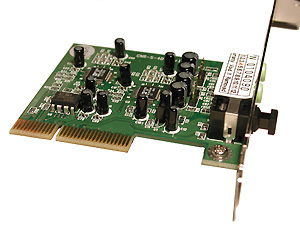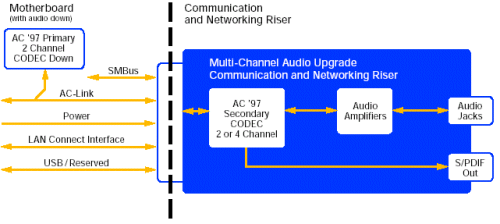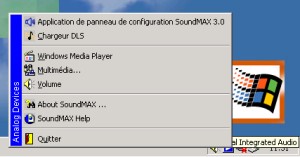
 |

|
| ActiveWin: Reviews | Active Network | New Reviews | Old Reviews | Interviews |Mailing List | Forums |
|
|
|
|
|
DirectX |
|
ActiveMac |
|
Downloads |
|
Forums |
|
Interviews |
|
News |
|
MS Games & Hardware |
|
Reviews |
|
Support Center |
|
Windows 2000 |
|
Windows Me |
|
Windows Server 2003 |
|
Windows Vista |
|
Windows XP |
|
|
|
|
|
|
|
News Centers |
|
Windows/Microsoft |
|
DVD |
|
Apple/Mac |
|
Xbox |
|
News Search |
|
|
|
|
|
|
|
ActiveXBox |
|
Xbox News |
|
Box Shots |
|
Inside The Xbox |
|
Released Titles |
|
Announced Titles |
|
Screenshots/Videos |
|
History Of The Xbox |
|
Links |
|
Forum |
|
FAQ |
|
|
|
|
|
|
|
Windows XP |
|
Introduction |
|
System Requirements |
|
Home Features |
|
Pro Features |
|
Upgrade Checklists |
|
History |
|
FAQ |
|
Links |
|
TopTechTips |
|
|
|
|
|
|
|
FAQ's |
|
Windows Vista |
|
Windows 98/98 SE |
|
Windows 2000 |
|
Windows Me |
|
Windows Server 2002 |
|
Windows "Whistler" XP |
|
Windows CE |
|
Internet Explorer 6 |
|
Internet Explorer 5 |
|
Xbox |
|
Xbox 360 |
|
DirectX |
|
DVD's |
|
|
|
|
|
|
|
TopTechTips |
|
Registry Tips |
|
Windows 95/98 |
|
Windows 2000 |
|
Internet Explorer 5 |
|
Program Tips |
|
Easter Eggs |
|
Hardware |
|
DVD |
|
|
|
|
|
|
|
ActiveDVD |
|
DVD News |
|
DVD Forum |
|
Glossary |
|
Tips |
|
Articles |
|
Reviews |
|
News Archive |
|
Links |
|
Drivers |
|
|
|
|
|
|
|
Latest Reviews |
|
Xbox/Games |
|
Fallout 3 |
|
|
|
Applications |
|
Windows Server 2008 R2 |
|
Windows 7 |
|
|
|
Hardware |
|
iPod Touch 32GB |
|
|
|
|
|
|
|
Latest Interviews |
|
Steve Ballmer |
|
Jim Allchin |
|
|
|
|
|
|
|
Site News/Info |
|
About This Site |
|
Affiliates |
|
Contact Us |
|
Default Home Page |
|
Link To Us |
|
Links |
|
News Archive |
|
Site Search |
|
Awards |
|
|
|
|
|
|
|
Credits |


|
Product: Pentium 4 2.2GHz - Intel D845BG
Motherboards Company: Intel Website: http://www.intel.com Estimated Street Price: $529.00 (for the CPU) Review By: Julien Jay |
CNR
|
Table Of Contents |
Depending on the version of the Intel Pentium 4 motherboard you choose you may have (or not) a CNR slot to add CNR extension cards. CNR stands for Communication & Networking Riser and replaces the old AMR (audio/modem riser). CNR is materialized on the motherboard with a small new brown connector. This port can receive very affordable additional cards since the devices youíll plug in it wonít feature any of the traditional components. Indeed those are directly integrated in the chipset or on one of the motherboard chip. CNR ports are definitely interesting for OEM manufacturers since they allow them to build low cost PC with powerful solutions. Nonetheless that doesnít mean that customers will get poor performance add-ons when they opt for a CNR solution. The CNR port can receive modem, audio, USB, Network and other kinds of cards. Intel provided us with a CNR SoundMax card: this card updates the onboard D845BG motherboard (it all depends on the sub version of the motherboard you have) audio circuit to one that provides digital SPDIF & optical outputs for the best possible 3D surround sound. That way you can enhance the performance of the built in AC97 sound controller adding a SoundMax CNR card.

SoundMax CNR
Card (click to enlarge)
Onboard Audio
![]()
In this age, users that donít have a sound card on their PC are rare. A sound card has definitely become essential and unavoidable. At this point every PC - even those dedicated to office use - comes with such a device. More demanding users have high-end PCI sound cards to listen and enjoy their favorite MP3 songs & DVDs. The Intel i850 and i845 family of chipsets come with build in audio support. In my point of view the sound chip included on Intelís motherboards are marvels even if some power users may argue they consume CPU resources to work while a PCI sound accelerator wouldnít. Well donít get me wrong, the onboard chip isnít designed to compete with a Sound Blaster Live, but it provides a clear and nice sound that will please everyone especially music lovers along with some advanced sound features explained here. Easy to install (you donít need to do everything since itís integrated), easy to use with powerful and bug free drivers and pleasant to hear are the features of SoundMax. The built-in audio support avoids the need for any supplementary sound card since it performs as well as them and so doesnít waste PCI bandwidth (in case you have a top notch sound card you can always disable this sound circuit).

It even prevents headaches from sound card installation issues and other driversí conflicts that can occur with normal sound cards. The integrated ICH2/ACí97 audio solution combined with SoundMax SPX technology is a cost effective solution to provide users with a robust sound quality. SoundMax digitally synthesizes, spatializes and mixes music and voice streams by taking advantage of the processor horse power and companion stereo CODEC (COding and DECoding), achieving a perfect audio parity with consumer electronic devices.
Since the onboard circuit complies to the ACí97 norm it performs analogue to digital conversion and perfectly supports simultaneous recording & playback operations. A typical ACí97 solution works like this when you play a wave file: the data is retrieved by the PCI controller, processed by the acceleratorís DSP, converted to ACí97 format and sent over the ACí97 interface to the CODEC. The audio CODEC then converts the PCM audio data to an analogue output, which is passed to the back jacks and ultimately to the PC speakers. Today Intel processors offer enough power to perform these DSP effects in software without excessive use of processor bandwidth. In the audio world, the quality of what you hear is measured using decibels: more the dB rate is higher (on a scale of 100 dB) the more the sound is better and the apparatus is able to play near to perfection sound. With an approximate rate of 94 dB signal to noise ratio the SoundMax audio circuit reaches the quality of a good CD player (in comparison a tape deck reaches in best cases 70 dB). The circuit supports 44.1 kHz sampling rate to deliver outstanding audio and its frequency response covers what the human ear can listen from 20 Hz to 20000 Hz.
Another surprising feature offered by the SoundMax Digital Audio integrated systems is the Sensaura 3D positional audio and environmental enhancement that lets you experience a full 360į sound. The same kind of technology is now present in many sound cards and modifies the phase and group delay of outgoing audio signals so users can experience an immersive, three dimensional sound experience. This technique is great especially in games (imagine you can hear your enemies arriving before they appear on your screen, or the bullets flying all around you) and when watching DVD. For high demanding real-time audio applications, SoundMax uses multi-voice DLS Wavetable MIDI synthesises with Staccato SynthCore Audio Rendering Technology to provide physically modelled sound effects capabilities.
The professional 4 MB DLS2 Sound Set offers 128 high quality recorded instruments while the XGlite Sound Set comes with a 1.2 MB memory that contains 360 instruments. If in terms of sound quality the SoundMax circuit doesnít pale at all in comparison to a Sound Blaster Live!, it doesnít offer as many outputs as the SB Live do. Indeed you canít use surround speakers (4 way speakers) or digital ones since they are no SPDIF output. Thankfully you can upgrade the sound circuit with a CNR card to create multi-channel surround sound system by adding two or four analog channels for use with two, four or even six speakers! The quality offered by the SoundMax audio chip is more than sufficient for speech recognition: we tested it with IBM ViaVoice 8.0 Pro and the software has no troubles with it.
Sound Drivers
We tested the SoundMax Audio circuit with the latest 3.0 drivers release under Windows 2000 Pro as well as under Windows XP Professional with the latest final drivers from Intel. First of all the drivers are using the WDM architecture so they are perfectly compliant with the advanced power management & other DirectX features and perfectly integrated with Windows. The SoundMax drivers offer several software features that let you enhance the depth and strength of bass frequencies for the output signal, models the human HRTF (Head Related Transfer Functions) to position sound effects anywhere in a 3D sound field, and much more. The drivers also let you choose which music synthesizer you want to use, the number of voices that are needed for an optimum playback, etc. The latest 3.0 drivers come with the SPX extension: the Sound Production Extensions technology generate responsive, interactive, and dynamic game sounds in real time in response to game physics, environmental variables, and player input. In the near future more & more games should be released with SPX support.


SoundMax Drivers 3.0 Control
Panel (click to enlarge)

SoundMax Tray Icon Menu
(click to enlarge)
To conclude the audio circuit test, I would say that at a pure acoustic
level, the SoundMax ACí97 chip produces a clear, audible and vivid sound
with strong basses and present treble. Overall this integrated low cost
sound processor provides high quality, top notch sound with tons of features
that are usually reserved to expensive sound cardsí owners. Choosing a
motherboard build around the SoundMax circuit is definitely a good choice to
preserve your budget without sacrificing audio quality.



